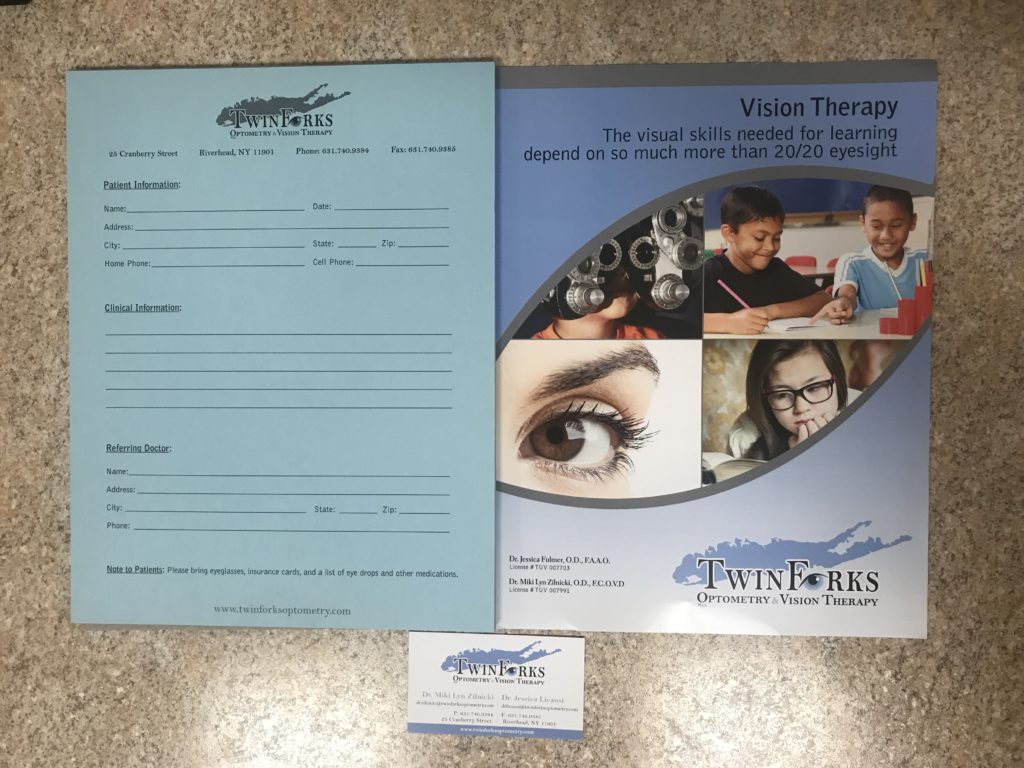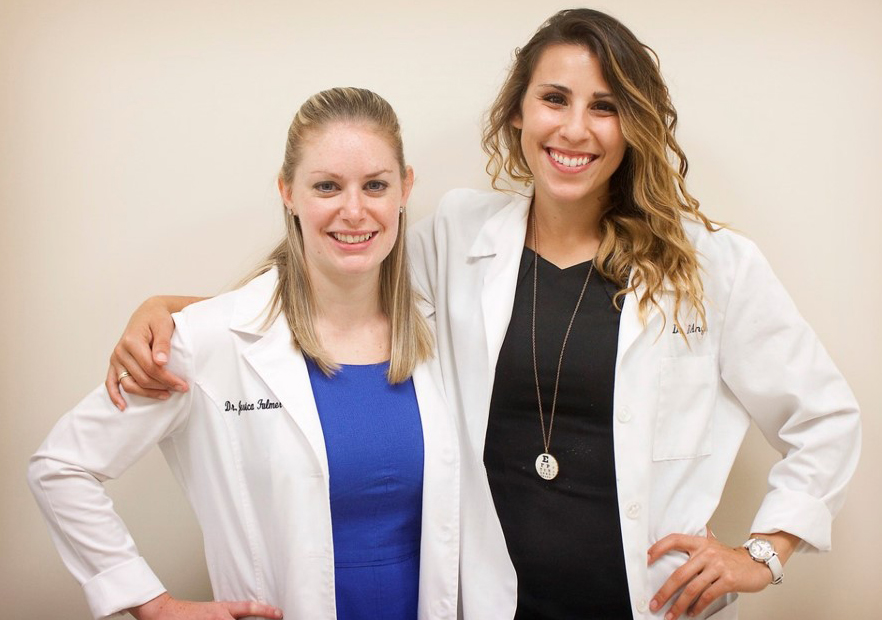By Miki Lyn Zilnicki, OD, FCOVD,
and Jessica Licausi, OD, FAAO, FCOVD

Nov. 6, 2019
You have the marketing you do to patients, and then you have–or should have–the marketing you do to other health-care practitioners in your community. Here is how our practice, which has vision therapy as its niche, and no optical, reaches out to other nearby doctors to generate new patients.
We currently have reciprocal consult relationships with fellow optometrists, ophthalmologists, opticians, concussion specialists, occupational therapists and physical/vestibular therapists. On average, we have a base of approximately 10 sources for consults that we receive new patients from.
Our office is primarily consult-based, making our percentage of patients coming to us from other doctors quite high, upwards of an average of 80 percent. Now that we are in our fourth year, the other 20 percent is made up of patients returning for annual exams and new patients who found us independently.
Our largest consult source is a traumatic brain injury center that deals primarily with managing post-concussion patient care. They are a team of progressive-thinking practitioners who really value vision rehabilitation as part of the healing process of post-concussion patients.
A close second is a local occupational therapist who really gets the visual piece to a child performing academically. She does a great screening test as part of her work-up, and if anything is flagged, she sends them our way.
Start Building Consult Relationships Early
We initiated making consult relationships in the early stages of opening the office. When we first opened the practice, we spent a lot of our downtime between patients reaching out to all of the surrounding local providers. We tasked our employees with making lists of contact information for all surrounding optometrists, ophthalmologists, opticians, pediatricians and daycare centers.
Our goal was to market that we were providing a different type of optometry to the area in the specialty of vision therapy. One piece of insight is you don’t want to market yourself too soon. While it sounds ideal to get the word about your practice out ASAP, it is extremely beneficial to have details in place such as your contact phone number, e-mail addresses and location, so that these potential consult sources can contact you when they have a patient to send your way.
Other Articles to Explore
In-Person Introductions & Word-of-Mouth Works Best
We used the “lists of contact information for all surrounding optometrists, ophthalmologists, opticians, pediatricians and daycare centers” created by our staff to set up as many face-to-face meetings as possible.
We found that this personal touch, and connecting face-to-face, has led to more long-lasting consult relationships than we had anticipated.
As we began to see more patients and grow, word-of-mouth also became a way to connect with local providers. This was particularly true for our vision-therapy patients, who would share their experience at our office and how their improving visual function impacted their lives with the other providers involved in their care.
We have had other practitioners, such as acupuncturists, massage therapists and cranial-sacral therapists, reach out to our office based on feedback from their patients. They wanted to learn more about what vision therapy entailed, and the types of patients we could help.
This was a great conversation-starter for all involved to figure out the role each of us plays in a patient’s treatment plan, and how to work together to best benefit our patients. It also helped us learn which identifying factors/symptoms warranted a consult to each of our specialties. This camaraderie has helped nurture and grow our relationships with other providers in our local area.

The bundle of materials about the practice that Drs. Licausi and Zilnicki send to health-care practitioners they hope to establish a consult relationship with. They say this information lets doctors and others know how the practice can help their patients.
Provide Key Information to Other Doctors
The most important thing to convey to a potential referral source is the service that you can provide patients. For us, that meant explaining vision therapy and how it differed from traditional optometry.
You want to discuss the symptoms and/or findings that should trigger a consult. We would explain how we could work on visual skills in the pediatric population for children with eye turns, children focusing difficulty, and those who were losing place when reading or not reaching their academic potential.
We also educated other health-care providers that we could improve visual function in those who experienced head injuries and concussions. Another helpful piece of information to communicate is how to best contact the office and ensure a consult is properly handed off to your office. In addition to this, it can be helpful to note the insurances you work with and your general hours and availability, so this information can be passed along to potential patients.
We bring the doctors we reach out to a “Twin Forks Bundle” that includes a supply of our business cards, pads of referral forms and our vision-therapy brochures. We then routinely re-send out packages of this information as a way to reach out to new potential consult sources and for replenishment to our recurrent consult sources. The packages get sent out yearly and anytime exciting news happens at the office like the addition of new services.
We both strive to write thorough reports back to other providers, so they have a summary of what occurred during our examination and our plan for the patient moving forward. Our EHR allows for reports to be generated on a reusable template, however, we have developed our own, custom templates that we use for our reports. We like to be more extensive and explanatory in our findings than the EHR system allows in its generic templates. We have the patient sign a medical release form to any provider that they want their records sent to.
We have our own pre-set write-ups of all potential binocular, accommodative, oculomotor and visual-perceptual dysfunctions in a Word document that thoroughly explains the areas assessed, the symptoms that could be caused and our therapy plan. We have received a lot of feedback from consult sources saying our thorough and patient-specific reports are greatly appreciated and allow for continuity of care between professionals.

Left to right: Jessica Licausi, OD, and Miki Lyn Zilnicki, OD
Miki Lyn Zilnicki, OD, FCOVD, and Jessica
Licausi, OD, FAAO, FCOVD, are co-owners of Twin Forks Optometry and Vision Therapy in Riverhead, NY.
To contact Dr. Zilnicki: DrZilnicki@twinforksoptometry.com.
To contact Dr. Licausi: DrLicausi@twinforksoptometry.com

























